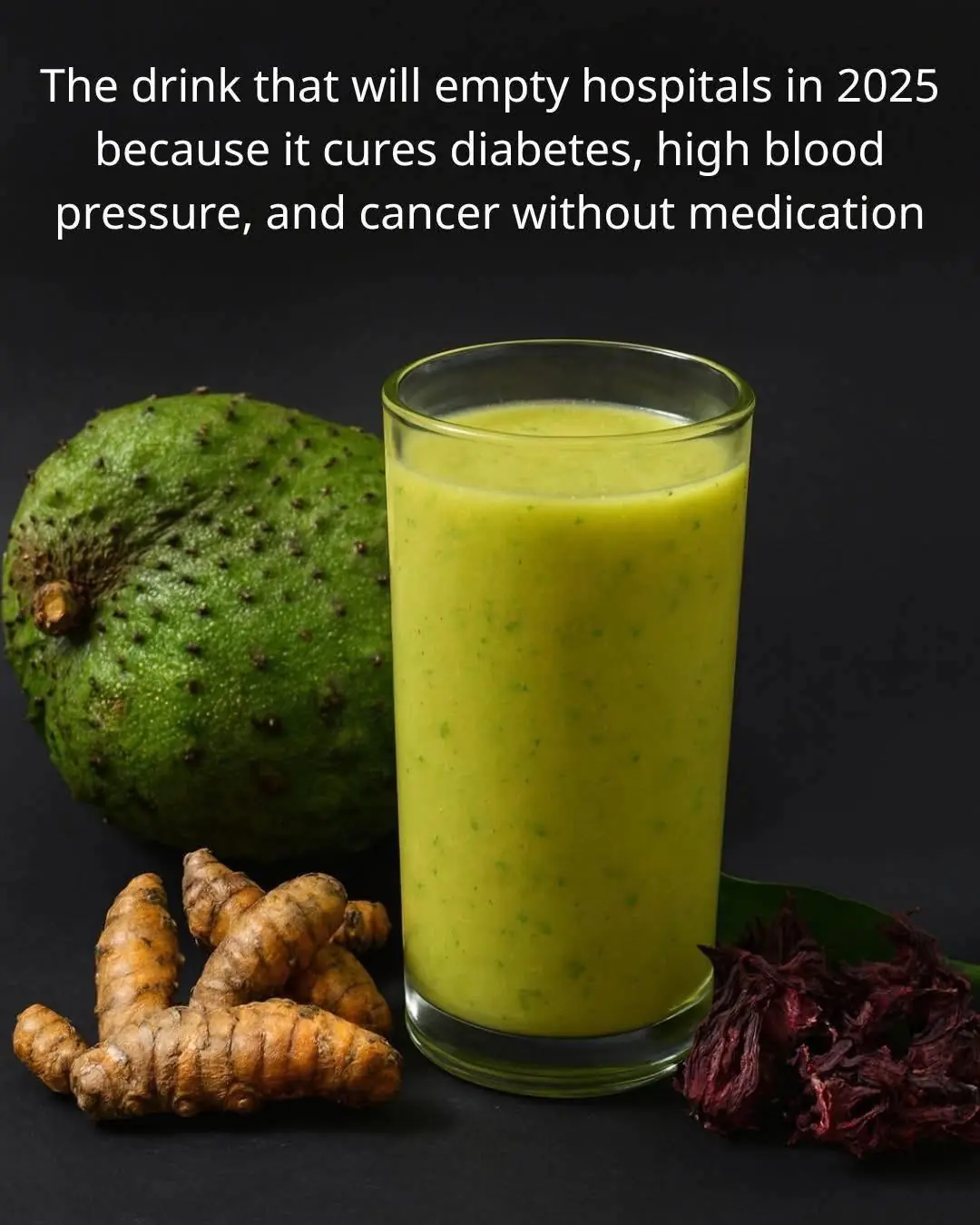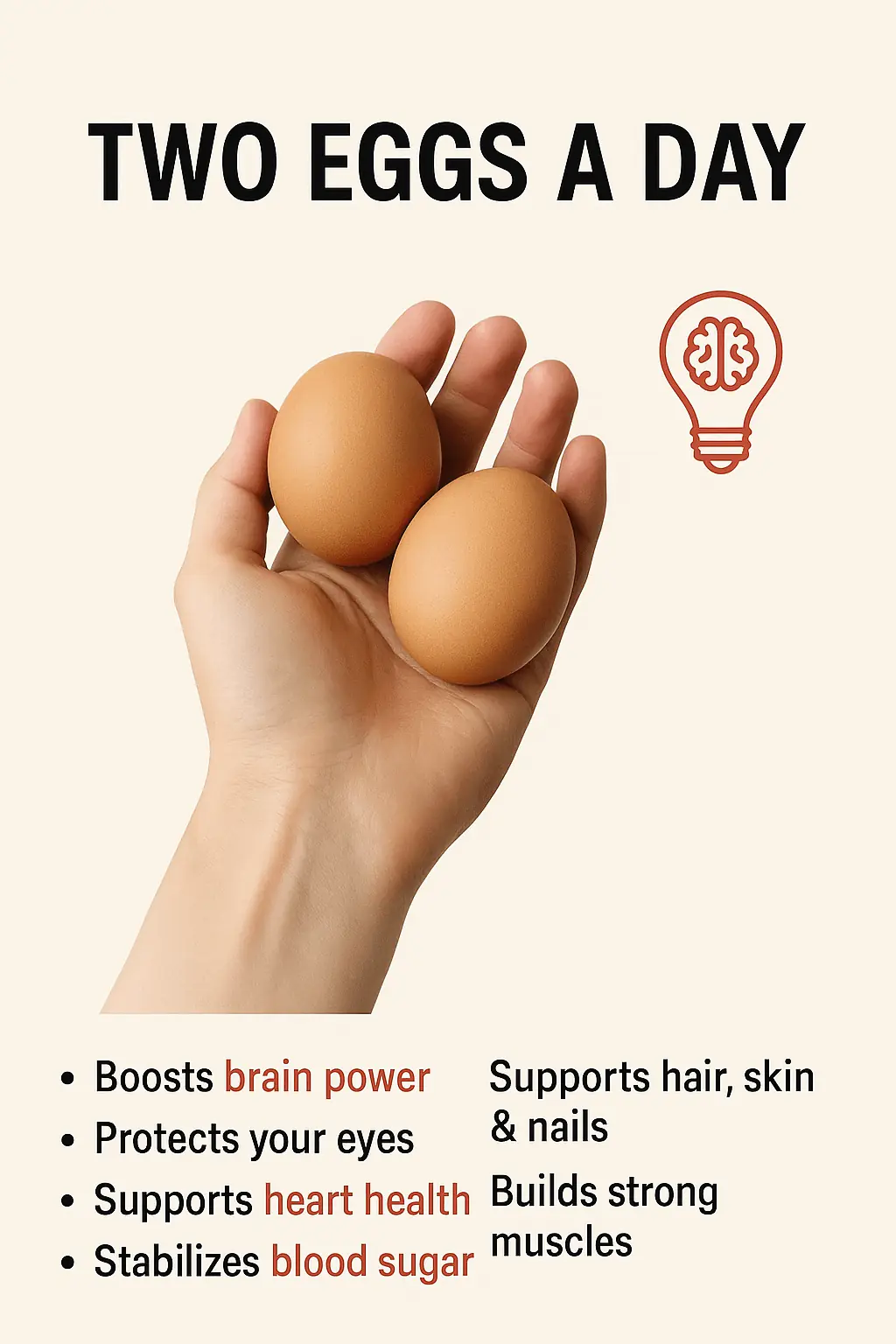
5 Foods That Can Damage Your Thyroid (Even Though They Look Healthy)
5 Foods That Can Damage Your Thyroid (Even Though They Look Healthy)
A spread of seemingly wholesome foods—raw broccoli, soy milk, peanuts—sits on a kitchen counter. A faint warning sign hovers over them, hinting that not everything healthy is harmless.
Have you ever stopped to wonder whether the healthiest foods in your kitchen might actually be undermining your thyroid? Especially if you’re over 60, this might not just be a theoretical concern—it could be quietly happening right now. It’s a surprising idea, but science supports it. And no, we’re not talking about processed junk or sugary snacks. The culprits here are foods that most people—including nutrition experts—consider clean, natural, and nutrient-rich. In fact, the fourth food on this list is practically a symbol of healthy eating, and the fifth one has shocked even seasoned dietitians.
Think of your thyroid as your body’s thermostat. When it functions smoothly, your internal “temperature” stays stable—you feel energized, your weight remains balanced, and your mind stays sharp. But when this thermostat begins to malfunction, the effects ripple through your entire system. You may find yourself feeling sluggish despite a full night’s sleep, colder than everyone else in the room, or shedding more hair than usual. Perhaps your memory feels slower, or you’ve gained weight without changing your habits.
After 60, this little gland becomes particularly delicate. Age-related changes, declining nutrient absorption, and subtle hormonal shifts all mean the thyroid operates with less room for error. The most common issue? Hypothyroidism, when the thyroid slows down as though stuck in “energy-saving mode.” It disproportionately affects women—statistics show that roughly one in five women over 60 have some degree of thyroid dysfunction, often without realizing it. The symptoms can so easily be mistaken for the normal fatigue of aging.
That’s why even the healthiest foods can become silent saboteurs when your thyroid is already vulnerable. And that’s where these five surprising examples come in—based on the insights of Dr. Alberto Sanagustín and current nutritional research.
Key Takeaways
-
Several popular “health foods”—including raw cruciferous vegetables, soy, peanuts, and millet—contain compounds known as goitrogens, which can block or disrupt thyroid hormone production.
-
After age 60, the thyroid becomes more sensitive to these compounds because the body absorbs nutrients, particularly iodine and selenium, less efficiently.
-
Preparation matters. Cooking, soaking, or fermenting can dramatically alter a food’s thyroid impact.
-
Timing also matters—especially if you take levothyroxine or other thyroid medications. Certain foods and drinks can reduce absorption if eaten too soon afterward.
-
The goal isn’t to ban these foods, but to understand how to enjoy them wisely.
1. Raw Cruciferous Vegetables (Broccoli, Kale, Cauliflower, Cabbage)
This first one might surprise you because it’s at the top of every “superfood” list. If you open your fridge right now, there’s a good chance you’ll find one of them. Broccoli, kale, cauliflower, and Brussels sprouts are nutritional stars, packed with vitamin C, vitamin K, fiber, and a cancer-fighting compound called sulforaphane. They’re the straight-A students of the plant world.
But here’s the catch: these vegetables contain goitrogens, substances that interfere with iodine absorption. Think of your thyroid as a factory that needs iodine as its main raw material to produce hormones. Goitrogens act like a blockade at the factory gate, preventing iodine from entering. Without iodine, the thyroid can’t produce the hormones that keep your metabolism balanced.
In younger people, this isn’t usually a problem—the body compensates. But after 60, iodine reserves decline and digestion weakens, allowing goitrogens to have a greater effect.
Dr. Sanagustín recalls a patient who had persistent fatigue, hair loss, and cold intolerance despite taking her thyroid medication religiously. Her lab results showed worsening hypothyroidism. The culprit? Her daily green smoothie—made with raw kale, spinach, and broccoli. A drink she believed was healing her was, in fact, making her symptoms worse.
✅ The Fix: You don’t have to give up these vegetables. Heat destroys most goitrogens. Boiling reduces them by about 90%, and steaming or sautéing by up to 60%. The key is moderation and cooking. Enjoy them a few times a week—but skip the raw kale smoothies if you’re managing a thyroid issue.
2. Soy and Soy Products
If the first food made you raise an eyebrow, this next one is even more debated. Soy is often hailed as the ideal plant-based protein—nutrient-dense, heart-friendly, and environmentally sustainable. From soy milk to tofu, tempeh, and edamame, it’s everywhere.
However, soy contains isoflavones, natural plant estrogens that can interfere with a thyroid enzyme called thyroperoxidase (TPO)—a key player in thyroid hormone synthesis. Imagine this enzyme as the spark plug of an engine. If soy extinguishes the spark, the engine (your thyroid) struggles to start, even with enough iodine available.
Younger, healthy individuals can often handle this interference, but for older adults or those already on thyroid medication, it can create a noticeable imbalance. The interaction becomes more concerning when you take levothyroxine—soy can significantly reduce how much of your medication your body absorbs.
Dr. Sanagustín shares another case: a woman who took her thyroid pill faithfully every morning but followed it with a bowl of cereal and soy milk. Despite perfect adherence, her lab results showed her thyroid levels worsening. The solution was simple but transformative: she began waiting four hours after taking her medication before consuming soy. Within months, her energy returned and her TSH normalized.
✅ The Fix: If you’re not on thyroid medication, soy in moderate amounts (two or three servings per week) is generally safe. But if you take levothyroxine, separate your dose and soy consumption by at least four hours. Consider having soy at lunch or dinner instead of breakfast. Lentils, chickpeas, or quinoa make great plant-based protein alternatives without the thyroid interference.
3. Cassava (Yuca, Manioc)
Now for a lesser-known suspect. Cassava, or yuca, is a starchy root enjoyed around the world, especially in Latin America, Africa, and Asia. It’s naturally gluten-free, budget-friendly, and a common base for flour and tapioca.
But beneath its innocent appearance lies a problem. Cassava contains cyanogenic glycosides, compounds that release trace amounts of cyanide when broken down in the body. These byproducts compete directly with iodine, essentially blocking it from reaching your thyroid.
In well-nourished people with sufficient iodine intake, the body can handle this small interference. But in older adults—or anyone with low iodine consumption—the effects can build up, especially when cassava is eaten frequently or undercooked.
✅ The Fix: Cassava isn’t off-limits. When boiled or baked thoroughly and eaten occasionally, it’s perfectly safe. The key is frequency and proper preparation. Pair cassava dishes with iodized salt and iodine-rich foods like seafood or eggs to maintain balance. For daily meals, potatoes, pumpkin, or sweet potatoes are safer choices that support rather than hinder thyroid function.
4. Peanuts (and Peanut Butter)
Here’s a pantry favorite that few expect to see on this list. Peanuts are often celebrated as a heart-healthy snack, rich in protein and good fats. But they, too, contain mild goitrogens—enough to disrupt iodine absorption when consumed in excess.
For most people, the effect is minimal. But for those with hypothyroidism who consume peanut butter daily—sometimes multiple tablespoons a day—the cumulative impact can subtly raise TSH levels and exacerbate fatigue or dry skin.
One 68-year-old patient had switched from processed meats to peanut butter toast each morning, convinced she was making a healthy swap. Yet her thyroid numbers worsened until she replaced peanut butter with almond butter and limited peanuts to an occasional treat. Within weeks, her symptoms eased.
✅ The Fix: Enjoy peanuts occasionally, not daily. For regular nut consumption, choose almonds, hazelnuts, macadamias, or pistachios. They provide similar nutrients without hindering your thyroid.
5. Millet – The “Healthy” Grain with a Hidden Danger
If you thought peanuts were surprising, millet might be the biggest shocker. Once a humble ancient grain, millet has recently made a comeback as a gluten-free superfood. It’s affordable, high in minerals, and easy to digest.
But millet contains goitrin, one of the most potent goitrogens known—and unlike others, it resists heat. Boiling, baking, or roasting won’t neutralize it. It continues to block iodine uptake, making it particularly problematic for those with thyroid issues.
The irony? Many people with Hashimoto’s or gluten intolerance turn to millet as a substitute for wheat, unknowingly worsening their thyroid condition.
✅ The Fix: If you have a thyroid disorder, it’s best to avoid millet or consume it only occasionally. Opt for quinoa, buckwheat, brown rice, or amaranth instead. They’re gluten-free, nutrient-rich, and thyroid-friendly.
A Crucial Note on Thyroid Medication
All these dietary tips are useless if you make one common mistake: taking your thyroid medication with the wrong foods or drinks. Coffee, dairy, fiber, calcium, or iron supplements can all block levothyroxine absorption.
Take your pill on an empty stomach, with a full glass of water. Wait 30 to 60 minutes before eating or drinking anything else. If that’s hard in the morning, you can take it at night—just ensure it’s at least three hours after your last meal.
This single adjustment can dramatically improve your thyroid function, even more than dietary changes alone.
Conclusion: Balance, Not Restriction
Certain healthy foods can indeed slow your thyroid after 60—but now you know how to manage them. Cooking your vegetables, spacing your soy intake, waiting after your medication—these small changes make a big difference.
Health isn’t about fear or restriction; it’s about wisdom and balance. Use iodized salt, eat a varied diet, and never start iodine supplements without a doctor’s supervision—too much iodine can harm your thyroid just as much as too little.
With awareness and a few smart habits, your thyroid can continue to act as your body’s steady thermostat—keeping your energy, mood, and metabolism in perfect harmony.
News in the same category


Why You Shouldn’t Pluck Your Nose Hairs

Top 15 Bizarre Signs of Magnesium Deficiency You Need to Know

4 Powerful Remedies to Eliminate Parasites — #2 Will Surprise You!

10 Early Warning Signs Your Liver Is in Trouble (Don’t Ignore #4!)

7 Heart-Healing Foods Your Cardiologist Won’t Tell You About

Say Goodbye to Joint and Bone Pain Naturally with This Ancient Herbal Remedy

Do you belong to these 4 types of people? You should know now.

What Happens If You Consume Raw Garlic Daily

Take a Glass of This and Your Liver Will Be Renewed!

Culantro: The Hidden Gem of Your Garden

Ginger, Clove, and Honey: The Natural Trio Your Body Will Thank You For

Routine Smoothie Ingredient Causes Severe Food Pipe Obstruction In Health-Conscious Teen

The Drink That’s Gaining Attention in 2025: A Natural Blend to Support Blood Pressure, Diabetes, and More

Man Passed Away After Eating Eggs — Stop Eating Eggs This Way Immediately

Two Eggs a Day — Small Habit, Big Health Boost

Sweetgum’s Hidden Powers: 7 Surprising Health Benefits You Need to Know

Mix castor oil and rosemary — the 7-day results will surprise you

Top 5 Nutrients to Reduce Swelling in Feet and Legs
News Post

I had no clue about this!

1 natural ingredient that helps you a lot

Growing Kiwi Trees at Home: A Guide for Pot Cultivation

ALERT! 7 Early Signs Your Kidneys Are Crying for Help

Dandelion roots are the most important part of the plant

Why You Shouldn’t Pluck Your Nose Hairs

Adam Sandler Sends Heartfelt Flowers to Jennifer Aniston EVERY Year On a Specific Day and Here’s Why

8 reasons why adding baking soda to your toilet tank is a must-do trick

My nana taught me this hack to dust ceiling fans in 3 mins with 0 work. Here’s how it works

My nana taught me this hack to lift carpet stains in 2 mins with 0 work. Here’s how it works

YouTubers spend $10,000 unboxing three jet boats from Temu and are in shock at what's delivered

Netflix star issues message to MrBeast after claims YouTube star is opening his own bank

Remembering Lee Elder, A Trailblazer Who Broke Barriers In Golf

‘Towanda Was Right’: Tamar Braxton Lands In the Hot Seat After Cozy Onstage Moment with Toni Braxton’s Husband Birdman

The Elephant That Never Forgot.

The Man Who Never Stopped Living.

The Cry in the Cane Field: A Mother Leopard’s Reunion.

The Diver Who Never Came Back: The Story of Saman Kunan.

The Girl Who Refused to Give Up: Yulia’s Story of Survival and Courage.
